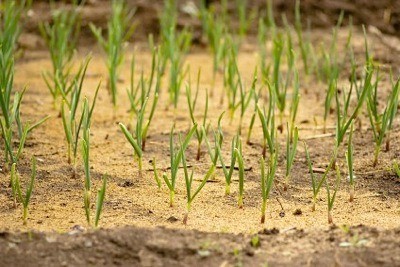
EllenB
Gold Post Medal for All Time! 858 Posts Spring planting has a way of sneaking up on you when you least expect it. Shopping for seeds in mid-winter a great way to spend the day, and gives you plenty of time to sort out the details of the next growing season. Whether you buy your seeds though the mail or from your local garden center, here are ten tips help you get the most for your money.
- For the best selection and prices, browse a variety of seed catalogs. Most of the major suppliers make their catalogs available online, which is a great way to start gathering ideas. When it's time to place an order, look for seed companies that specialize in plants that are grown in your specific region. Use the Garden Watchdog to type in your zip code and get a list of companies in your area.
http://davesgarden.com/products/gwd/
- After placing your order, keep your catalogs for reference. They contain important information about your seeds that you may find useful later. Remember that catalog statistics like height, spread, and days to maturity should only be used as an estimate. How your plants ultimately perform is dependent on local growing conditions.
- Seed catalogs and websites include a lot of abbreviations in their descriptions. Most of these reference a plant's resistance to disease, or indicate a cultivar that has earned special merit. Look for a key to the symbols at beginning of the catalog or on the bottom of each page. Here are some common abbreviations you may encounter:
- AAS: All American Selections Winner
- A: Anthracnose
- CMV: Cucumber mosaic virus
- DM: Downy mildew
- F: Fusarium wilt
- F1: Hybrid Variety
- LB: Late Blight
- N: Nematodes
- OP: Open Pollinated
- PM: Powdery Mildew
- TMV: Tobacco Mosaic virus
- V: Verticillium wilt
- Fresh seed has the highest rate of germination. When purchasing seeds off the rack, check the date stamped on the packet. Be sure it's the current year. If you don't see a date, don't buy it.
- Tiny seeds are sometimes coated in clay (pelleted) to make them easier to handle and sow. The pellets are sown on top of the soil, where the clay coating dissolves and exposes the seed when it comes into contact with water. Keep in mind that although pelleted seed packets look bulky, they may not contain as many seeds as you think.
- Research before you buy. Choose cultivars based on plant size, habit, and tolerance of your soil conditions. If specific climate or growing conditions in your area tend to leave plants vulnerable to disease problems, make sure to look for disease-resistant cultivars.
- Look for proven performers. For example, to receive the All-American Selections Winner Label, a vegetable or flower must have performed well in test gardens around the country and proven to be superior to all others on the market. Individual suppliers may also have their own marks of quality.
- These are two types of seeds: hybrids and open-pollinated cultivars. Hybrids may produce earlier harvest and higher yields, but often at the expense of natural hardiness and resistance to disease. Seeds saved from hybrid plants may either be sterile or fail to breed true to their parent plant. Open-pollinated seeds are from traditional varieties that have been selected and grown for their desirable traits over a period of many years. They may taste better and are often more adaptable to local growing conditions. Seeds saved from open pollinated plants stay true to their parent plant.
- Seeds from commercial suppliers sometimes come pre-treated with synthetic chemicals to control seed decay and damping-off diseases (bright red or green colored seeds usually indicate treatment). Some studies have linked the introduction of these chemicals into the environment with the massive die-offs of honey bees. More data is still needed, but in the meantime, you can help protect these important pollinators by using untreated seeds.
- Finally, any seed you buy should give good results if you follow the growing instructions. If it doesn't, contact the company for a refund.

About The Author: Ellen Brown is an environmental writer and photographer and the owner of Sustainable Media, an environmental media company that specializes in helping businesses and organizations promote eco-friendly products and services. Contact her on the web at http://www.sustainable-media.com
Add your voice! Click below to comment. ThriftyFun is powered by your wisdom!

February 11, 20110 found this helpful
Thanks so much for this post. I'm just getting back to growing a garden and there is much new info to digest. I checked out that link and discovered my favorite seed company has such a great rep with reviewers.
I'm now making my plans for this year and tending to my kale which so far has survived winter. With the new prices for produce due to the latest cold weather in the US. I will be appreciating it especially knowing its fresh and organically grown.
Again, thanks so much,
Dee
Add your voice! Click below to comment. ThriftyFun is powered by your wisdom!

